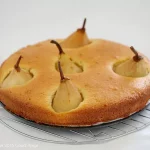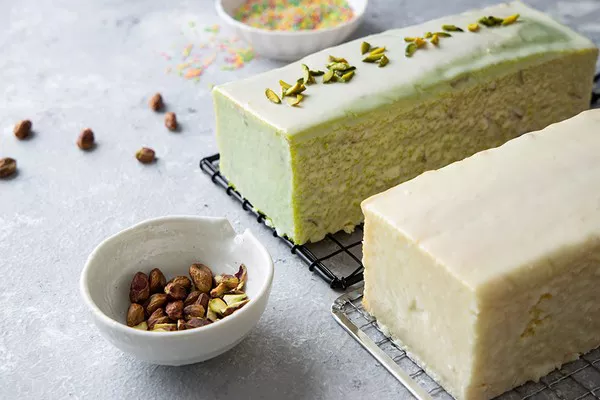Tea cakes, with their delicate crumb and subtle sweetness, are the perfect accompaniment to a steaming cup of tea. As simple as they may seem, mastering the art of tea cake preparation involves a blend of precision, quality ingredients, and a dash of creativity. The allure of a perfectly baked tea cake is timeless, and nothing captures the essence of this culinary art quite like a Classic Vanilla Tea Cake.
Classic Vanilla Tea Cake Recipe

Making tea cakes is a delightful culinary adventure that combines simplicity with the opportunity for creative expression. Below is a basic recipe for classic vanilla tea cakes.
- 1 cup (2 sticks) unsalted butter, softened
- 2 cups granulated sugar
- 4 large eggs
- 3 cups all-purpose flour
- 1 tablespoon baking powder
- 1/2 teaspoon salt
- 1 cup whole milk
- 2 teaspoons pure vanilla extract
-
Preheat your oven to 350°F (175°C). Grease and flour your chosen baking pan. This recipe works well with a standard loaf pan or can be adapted for muffin tins or bundt molds.
-
In a large mixing bowl, cream together the softened butter and sugar until light and fluffy. This can be done with a hand mixer or a stand mixer fitted with a paddle attachment.
-
Add the eggs one at a time, beating well after each addition. This step ensures that the eggs are fully incorporated and contributes to the cake's light texture.
-
In a separate bowl, whisk together the flour, baking powder, and salt. Gradually add this dry mixture to the butter and sugar mixture, alternating with the milk. Begin and end with the dry ingredients, mixing on low speed until just combined.
-
Pour in the vanilla extract and mix until evenly distributed. The vanilla adds a classic flavor to the tea cakes.
-
Transfer the batter to the prepared baking pan, ensuring it is spread evenly. Smooth the top with a spatula.
-
Bake in the preheated oven for approximately 50-60 minutes or until a toothpick inserted into the center comes out clean. Keep an eye on the baking time, as it may vary depending on your oven and the chosen pan.
-
Allow the tea cake to cool in the pan for about 10-15 minutes before transferring it to a wire rack to cool completely. This step is crucial to prevent the cake from breaking.
Tips for Making Perfect Tea Cakes
Achieving the perfect tea cake involves attention to detail and a few key techniques. Here are some tips to help you master the art of making perfect tea cakes:
Use High-Quality Ingredients:
Start with fresh, high-quality ingredients. The better the ingredients, the better the flavor and texture of your tea cakes. Use real butter, fresh eggs, and pure extracts for optimal results.
Ensure Proper Butter Softening:
Allow butter to come to room temperature before using. Softened butter incorporates more easily into the batter, creating a smoother texture. However, avoid melted butter, as it can affect the structure of the cake.
Room Temperature Eggs:
Use eggs at room temperature. Cold eggs can cause the batter to curdle, affecting the cake’s texture. To quickly bring eggs to room temperature, place them in a bowl of warm water for a few minutes.
Cream Butter and Sugar Thoroughly:
Creaming butter and sugar creates a light and fluffy base for your tea cakes. Beat them together for at least 3-5 minutes until the mixture is pale and airy.
Alternate Dry and Wet Ingredients:
When adding the dry ingredients (flour, baking powder, salt) and wet ingredients (milk, vanilla extract), do so in batches. Start and end with the dry ingredients, mixing each addition just until combined. Overmixing can lead to a dense cake.
Properly Measure Flour:
Measure flour accurately by spooning it into the measuring cup and leveling it off with a flat edge. This helps prevent the incorporation of too much flour, which can result in a dry cake.
Don’t Overmix:
Once the flour is added, mix only until the ingredients are combined. Overmixing can lead to a tough texture in your tea cakes.
Preheat the Oven:
Ensure that your oven is fully preheated before placing the tea cake inside. A consistent temperature is crucial for even baking.
Choose the Right Baking Pan:
Select the appropriate pan for your tea cakes. Different pans can affect baking times and results. Adjust baking times accordingly when using different-sized or shaped pans.
Check for Doneness:
Use a toothpick or cake tester to check for doneness. Insert it into the center of the cake—if it comes out clean or with a few moist crumbs (not wet batter), the cake is done.
Cooling Properly:
Allow the tea cake to cool in the pan for 10-15 minutes before transferring it to a wire rack. Cooling too quickly can cause the cake to break.
Optional Enhancements:
Glaze:
Prepare a simple glaze using powdered sugar and a liquid of your choice—milk, citrus juice, or even a flavored syrup. Drizzle the glaze over the cooled tea cake for an added layer of sweetness and visual appeal.
Toppings:
Experiment with toppings to add texture and complexity. Chopped nuts, shredded coconut, or a dusting of powdered sugar are simple yet effective choices.
Fruit Additions:
Introduce fresh or dried fruits to the batter for bursts of flavor and visual interest. Berries, diced apples, or even a swirl of fruit preserves can take your tea cake to the next level.
Flavor Variations:
Citrus Infusion:
Zest from citrus fruits, such as lemons or oranges, can add a refreshing and zesty dimension to the tea cake. Consider incorporating citrus zest into the batter or as a topping.
Almond Essence:
Enhance the flavor profile by adding a touch of almond extract. The subtle nuttiness pairs beautifully with the vanilla, creating a nuanced and sophisticated taste.
Spice Exploration:
Experiment with spices like cinnamon, nutmeg, or cardamom to infuse warmth and depth into the tea cake. These spices can be added to the dry ingredients for a fragrant and comforting twist.
Troubleshooting Tips:
Uneven Rising:
Uneven rising can be caused by an uneven distribution of leavening agents. Ensure thorough mixing and proper distribution of dry ingredients.
Collapsed Center:
A collapsed center may indicate that the cake was taken out of the oven too early. Confirm doneness using the toothpick test and allow the cake to bake for the recommended time.
Overbrowning:
If the top of the cake is browning too quickly, cover it with aluminum foil during the last few minutes of baking to prevent overbrowning while the center cooks through.
Presentation and Serving Suggestions:
The beauty of a Classic Vanilla Tea Cake lies not only in its taste but also in its presentation. Consider these suggestions to enhance the visual appeal and elevate the overall tea-time experience.
Presentation Tips:
Simple Glaze Designs:
Experiment with different glaze designs. A simple drizzle, zig-zag pattern, or concentric circles can add a touch of sophistication to your tea cake.
Powdered Sugar Magic:
Dusting the tea cake with powdered sugar through a stencil or using a paper doily can create intricate designs. This method adds a touch of elegance without the need for elaborate decorations.
Edible Flowers and Garnishes:
Elevate the aesthetic by adorning your tea cake with edible flowers or herb sprigs. This not only adds visual interest but also introduces subtle herbal notes.
Serving Suggestions:
Tea Pairing:
Thoughtfully pair your Classic Vanilla Tea Cake with different teas to create a harmonious tea-time experience. Consider classic choices like Earl Grey or Darjeeling, or explore herbal infusions for a unique twist.
Clotted Cream and Jam:
Serve slices of tea cake with clotted cream and your favorite jam or preserves. The combination of the rich, slightly tangy cream and the sweetness of the jam complements the tea cake beautifully.
Fruit Compote Accompaniment:
Create a simple fruit compote using seasonal fruits to serve alongside your tea cake. The freshness and acidity of the fruit can balance the sweetness of the cake.
Conclusion:
The Classic Vanilla Tea Cake stands as a testament to the art of baking—a harmonious blend of simplicity and sophistication. As you embark on your journey to master this timeless recipe, remember that the joy lies not just in the end result but in the process of creation. Whether shared with friends or savored in solitude, a slice of perfectly crafted tea cake is a moment of pure indulgence—one that transcends generations and brings warmth to every tea-time gathering. Embrace the elegance, experiment with creativity, and let the aroma of vanilla envelop you as you craft your own masterpiece.

